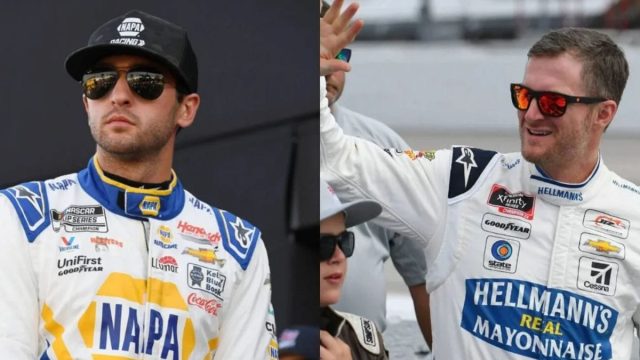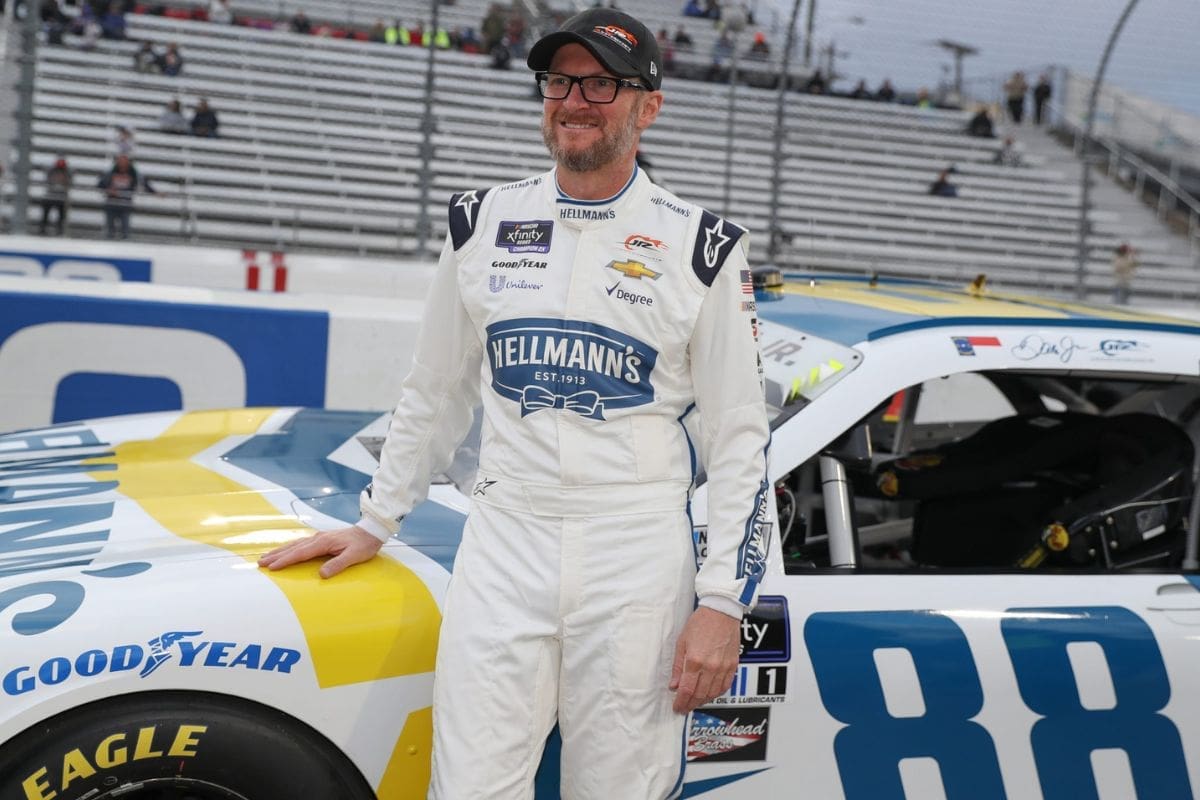Dale Jr. Criticizes NASCAR for Chase Elliott’s Penalty: Dale Earnhardt Jr.‘s recent critique of NASCAR’s penalty system, specifically concerning Chase Elliott‘s sanction for a blend line violation, raises notable questions about the organization’s enforcement consistency and rule clarity. By highlighting the perceived arbitrariness of penalties and demanding a more transparent approach, Earnhardt Jr. emphasizes the broader implications for competitive integrity within the sport. Additionally, his call for a shift towards warnings rather than immediate penalties prompts a reevaluation of how officials communicate rules to drivers.
Key Highlights
- Dale Earnhardt Jr. criticized NASCAR for inconsistent penalties, particularly targeting the penalty imposed on Chase Elliott for a blend line violation.
- He highlighted historical leniency in rule enforcement, questioning the fairness of recent stringent penalties.
- Earnhardt Jr. demanded issuing warnings instead of mid-race penalties to preserve competitive integrity.
- He called for clearer communication from officials regarding racing boundaries to reduce confusion among drivers.
Dale Jr. Assesses Indianapolis Penalties
Dale Earnhardt Jr.’s candid evaluation of the penalties imposed on Chase Elliott and Brad Keselowski at Indianapolis Motor Speedway emphasizes his belief that NASCAR’s enforcement of racing rules can often lack consistency and clarity. His critique arises from the observation that both drivers were penalized for a blend line violation during the Brickyard 400, a situation he argues highlights a broader issue within NASCAR’s officiating standards.
Earnhardt Jr. recalls his experience with penalties and points out that such infractions have historically not been strictly enforced, suggesting that recent calls appear arbitrary and inconsistent. He expressed concern over the decision to impose penalties mid-race rather than offering warnings, which could have served as a more constructive approach to maintaining competitive integrity.
By suggesting that a simple warning could have sufficed, Earnhardt Jr. raises valid questions about the threshold for penalizing drivers in dynamic racing environments. He stresses the need for clear communication from officials regarding specific boundaries, such as the significance of the last white line, which could help drivers avoid infractions in the beginning.
“I’ve seen so many cars go where they went. This is something that I have a little bit of a problem with. It’s never really been something that was heavily officiated before, to pop a couple of drivers in the middle of the race when others we know are probably doing the same thing, it just felt loosey-goosey. It’s not a great look. The #6 and the #9 should have gotten a warning and said specifically, the last white line is the one we do not want you to cross so stop, next one will be a penalty.” – (dale jr.)
"The No. 6 and the No. 9 should have gotten a warning." ⚠️ pic.twitter.com/nqI9r8q9qF
— Dirty Mo Media (@DirtyMoMedia) July 23, 2024
Chase Elliott’s Reaction After Penalty
Chase Elliott’s furious response to his penalty during the Brickyard 400 highlights the intense emotions that can surface in racing situations, revealing his frustration with the enforcement of rules and the broader implications for driver morale. As NASCAR’s most popular driver, Elliott’s reaction carries considerable weight and reflects the strain athletes face in the sport. His angry outburst over the radio, filled with expletives, emphasizes the raw emotions that can erupt when a driver’s performance is seemingly undermined by officiating decisions.
The incident raises crucial questions about the consistency and transparency of NASCAR’s penalty system. As drivers grapple with the consequences of penalties, the sport must guarantee that enforcement is fair and transparent to maintain trust and integrity among competitors and fans similarly.
Kyle Larson’s Views on NASCAR’s Blend Line Rule
What insights can be drawn from Kyle Larson’s comments regarding the enforcement of NASCAR’s blend line rule, especially in the context of his race experience? Larson’s reflections show the ambiguity surrounding the rule and the communication challenges faced by drivers and officials. His assertion that neither he nor his team fully understood the blend line rule highlights a broader concern about the consistency and clarity of NASCAR’s regulations.
“I don’t think NASCAR initially knew what the rule was because then we started kind of getting communication with them.” – (larson)
Drawing from his participation in the Indy 500, Larson emphasizes a contrasting interpretation of the blend line, where drivers were allowed to straddle the white line without penalty. This experience provided him with a frame of reference that he applied during the race alongside Chase Elliott. As he observed Elliott’s driving, Larson grappled with uncertainty about his eligibility for a penalty, showing the risky nature of decision-making in racing.
Larson’s comments reflect a critical moment in which personal experience and observed behavior influenced his tactical choices on the track. Ultimately, his ability to handle the situation successfully—while Elliott incurred a penalty—raises questions about the fairness and transparency of rule enforcement.
News in Brief: Dale Jr. Criticizes NASCAR for Chase Elliott’s Penalty
Inconsistencies in NASCAR’s enforcement of penalties have raised considerable concerns among stakeholders, including prominent figures such as Dale Earnhardt Jr. The recent sanction imposed on Chase Elliott for a blend line violation highlights the need for clearer communication of rules and more equitable penalty application.
By demanding for a system that favors warnings over immediate penalties, Earnhardt Jr. emphasizes the importance of competitive integrity and the necessity for a transparent framework within the sport to foster trust among participants.
ALSO READ: Dale Earnhardt Jr. Urges NASCAR to Keep Sport Alive Amid Bubba Wallace Controversy



